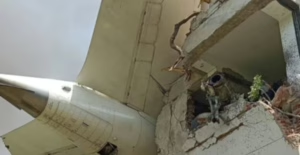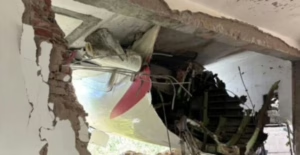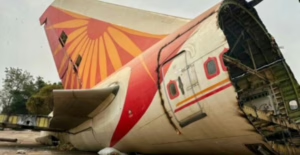
The Air India Plane Crash has reignited global conversations about aviation safety, emergency procedures, and the potential technical failures that can lead to tragic accidents. As investigators dig deeper, a critical question is at the forefront: Did double engine failure cause the Air India plane crash? This blog examines the Air India plane crash cause, looks at the emerging details, and unpacks what we know so far, including the Air India crash black box findings.
The Air India Tragedy: What Happened?
The Air India tragedy occurred when Flight 171, en route from Delhi to Ahmedabad, faced severe in-flight issues that ultimately led to a catastrophic crash near the Ahmedabad airport. The incident shocked the nation and drew immediate attention from aviation authorities, experts, and the global community.
Initial reports suggested that the Air India plane crash cause might be linked to a possible double engine failure. Such failures are extremely rare in modern aviation but, when they do occur, they can leave pilots with limited emergency options.
The Air India Ahmedabad crash cause is still under investigation, but preliminary information points to a sudden loss of thrust in both engines shortly before landing. Witnesses reported hearing unusual noises, followed by silence, suggesting both engines may have simultaneously lost power.
Was Double Engine Failure the Cause?
Double engine failure is among the most critical emergencies a pilot can face. In the case of Flight 171, sources close to the investigation have indicated that the engines showed signs of trouble moments before the crash. Pilots attempted emergency procedures, but they were unable to regain power.
Some experts suggest that Air India double engine failure may have stemmed from fuel contamination, bird strikes, or a rare simultaneous mechanical failure. However, nothing has been officially confirmed yet.
Investigators are now focusing on whether dual engine failure Air India was the direct trigger or part of a more complex chain of failures. Modern aircraft like the Boeing 787 are designed to withstand single engine failures and even glide safely in the event of a total power loss, provided emergency measures like deploying the Ram Air Turbine (RAT) are executed in time.
The Role of the Ram Air Turbine (RAT)
A critical piece in understanding this Air India tragedy is whether the RAT—a small wind-powered device that provides emergency hydraulic and electrical power—deployed during the crisis. The RAT emergency turbine Air India crash scenario is being closely analyzed as a potential factor that could have mitigated the accident.
If the RAT failed to deploy or did not provide sufficient emergency power, pilots would have been left with minimal control, worsening the situation.
Black Box Findings: What Do We Know?
The Air India crash black box findings are now central to the investigation. Data from the flight data recorder (FDR) and cockpit voice recorder (CVR) will help authorities reconstruct the final moments of the flight.
Sources familiar with the preliminary black box findings have indicated that there were multiple warning signals in the cockpit related to fuel pressure and engine performance. However, until the final report is released, these details remain part of an evolving narrative.
Investigators are particularly interested in whether the pilots attempted a RAT deployment and if any attempts to restart the engines were made. The Air India crash black box findings will also shed light on whether crew coordination and emergency procedures were followed correctly.
Other Possible Causes Under Investigation
While the theory of Air India double engine failure is gaining traction, authorities are not ruling out other possibilities. Among the scenarios being studied are:
-
Fuel Contamination: There is a possibility that poor fuel quality led to engine flameout. Investigators are examining refueling logs and samples.
-
Bird Strike: Ahmedabad airport has known bird activity. A bird strike to both engines, though rare, could explain the sudden failure.
-
Mechanical Defects: The aircraft’s maintenance history is under review to determine if there were pre-existing issues.
-
Human Error: Whether proper emergency protocols were followed is also a key focus area.
The Air India Ahmedabad crash cause may ultimately involve a combination of these factors rather than a single point of failure.
Air India’s Response and Fleet Safety
In the aftermath of the Air India plane crash, the airline has expressed deep sorrow for the loss and pledged full cooperation with authorities. Air India has also launched an internal review of its safety protocols, particularly for long-haul flights using similar aircraft.
The Directorate General of Civil Aviation (DGCA) has mandated immediate fleet-wide engine checks to prevent similar incidents in the future. The incident has put pressure on Air India to ensure its safety management systems are robust and transparent.
The Broader Impact on Aviation Safety
The Air India tragedy has sparked international discussions on pilot training for dual engine failures, the readiness of emergency systems like the RAT, and the effectiveness of airport rescue operations.
Experts suggest that lessons learned from this crash could lead to enhanced training protocols and improvements in aircraft design to better handle dual engine failures in the future.
As more details from the Air India crash black box findings become public, the aviation community will likely implement changes that could prevent similar accidents globally.
Conclusion: Awaiting Final Answers
The investigation into the Air India plane crash cause is ongoing, and while double engine failure remains a leading theory, officials are being careful not to draw premature conclusions. The Air India Ahmedabad crash cause is expected to be confirmed only after a full review of the technical data, black box recordings, and maintenance history.
What is clear is that the Air India tragedy has once again highlighted the complexities of aviation safety and the razor-thin margins that separate disaster from a safe landing.
As the world waits for the final accident report, the aviation industry, regulators, and airlines must continue to prioritize learning from these incidents to make air travel even safer.





